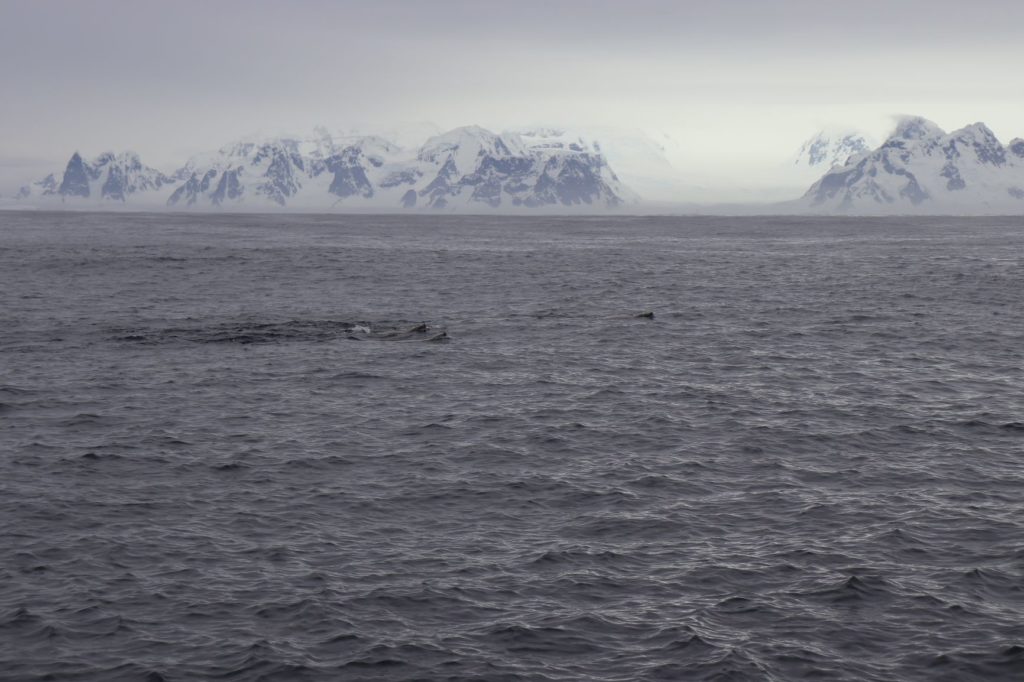Welcoming Committee

January 7 2019 (Note: this is #8 in a series of posts describing my NSF-sponsored fieldwork in Antarctica aboard the Laurence M. Gould). Photos in this post courtesy of Patricia Thibodeaux.
On our second day of sampling, I got my first chance to help deploy the 2-m plankton net. The net is big and heavy, mounted to a steel frame, and it can be really unwieldy, especially in heavy seas. It’s hoisted into the water by a heavy-duty winch, but two people are needed on deck to guide the net up out of its cradle and into the water. In our case, an “MT” (marine technician, part of the ship’s technical crew) and a member of our zooplankton group pair up for this job. Because the back of the deck is open during deployment, we each wear a safety belt with a line that tethers us into the ship. That’s in addition to our floatation jacket (“float coat”), hard hat, and steel-toed boots. There’s a lot to think about while deploying the nets, and it’s helpful that the MT, Josh, is very skilled and could direct the process. While we are on deck, he communicates with the winch operator using a radio and hand signaling. Basically, we prepare the net by attaching the cod end and flow meter (parts that catch the sample and measure how much water we passed through), untie the net from the cradle, and open the back gate. Then we spread the net and bring the depressor forward (the heavy metal part that rides below the net and hold it vertically). As the net lifts, we guide the cable around the cradle, help the depressor move forward, throw the cod end off the deck, and then guide the net evenly into the water. Then we secure everything and wait for the net to come back with our sample.
Things went pretty smoothly, thanks to guidance from Josh, and some coaching from Debbie. But there was also a special bonus this time. Four crabeater seals had come out to watch the tow! If you look closely, you can see them in the image at the top, as black patches in the middle of the water. The seals were probably hoping for a free snack, but as I watched them all lined up with their heads bobbing above water, I felt like they have come out to welcome me to come kind of “zooplanktonologist club.”